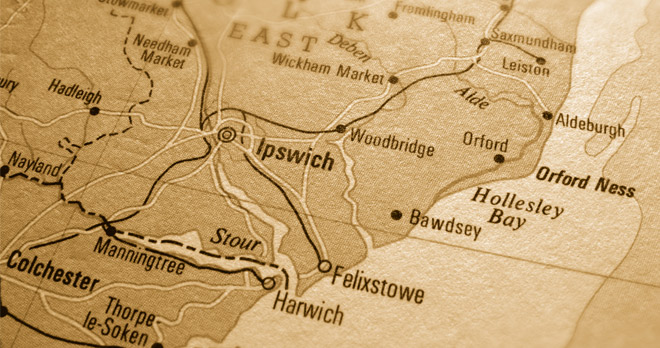Test case holds key to future housing developments as councils go to war over planning decisions

The High Court is set to judicially review a planning decision made by a District Council in Suffolk in what will be a test case with potentially far-reaching implications for housing developments in rural England.
The case which is being heard by the High Court at the Royal Courts of Justice in London on 7 December, will examine whether a decision by Babergh District Council to allow a housing development in the picturesque and historic village of East Bergholt was lawful.
The case, which is being brought by East Bergholt Parish Council, concerns the building of 10 homes in an Area of Outstanding Natural Beauty. A separate decision on the same day by the same District Council to allow 144 homes to be built on another site in the same village, best known for inspiring the works of landscape artist John Constable, is now being reconsidered and could depend on the outcome of this test case. Overall, across the district, the development of more than 415 houses in rural parts of Suffolk depend on the outcome of this case.
Stewart Wilkinson, a partner in the Dispute Resolution team at RWK Goodman, who is representing East Bergholt Parish Council in their planning battle against Babergh District Council, said: “There are a number of parish councils in Suffolk and across rural England that will be eagerly awaiting the outcome of this case. The judgment will clarify how local housing needs should be met in rural locations in view of the ever increasing pressure on local planning authorities to allow residential development. At least three judicial reviews are currently being brought by rural Parish Councils against Babergh District Council and this case will be the test case which will decide whether hundreds of new homes are built in this beautiful, culturally-significant and as yet unspoilt part of Suffolk.”
The dispute between East Bergholt Parish Council and Babergh District Council arose after planners approved two separate applications to build a total of 154 homes in the village of East Bergholt at a time when the Parish Council’s Neighbourhood Development Plan was still being finalised. A third development of an additional 75 houses in the village, is now going through the planning process.
Neighbourhood planning is a right for communities, introduced through the Localism Act 2011, which enables people to shape developments in their area in response to their local needs. Neighbourhood development plans become part of the local plan and the policies contained within them are used to help determine planning applications.
East Bergholt’s plan was nearing completion when the two planning applications were approved. The permissions were in sharp contrast to the majority of residents’ vision for the organic development of the village and the building style wasn’t in keeping with other houses or its setting within an Area of Outstanding Natural Beauty. The vision for the future of the village was approved by 94 per cent of the villagers who voted in a referendum held in September.
In addition, the court case raises concerns over the extent to which this District Council’s planning decisions have been influenced by the Government’s New Homes Bonus which provides income to cash-strapped local authorities as a reward for authorising development. Babergh District Council has reported a shortfall of over £2million which they have indicated they will look to fill through allowing more development in the district.
Stewart Wilkinson said: “People may be surprised by the idea that Central Government policy has made local authorities so financially dependent on money provided in return for granting housing developers planning permission, that many of these authorities feel they have to allow development to stay solvent. In this case the situation has become so acute it is apparent that the needs of local people have taken a back seat to the needs of the Council’s finance department.
"Parish Councillors are elected to act as the voice of the village and so it is only right that they should challenge the wider District Council’s decisions if they are seen to run roughshod over the views of local people, or undermine local planning policy, or represent a clear conflict of interest.
“As a result of the Parish Council’s actions in this case, the District Council has been persuaded to re-consider the application to build 144 homes on a field off Moore’s Lane which was granted recently despite very strong local opposition. The outcome of that re-consideration almost certainly depends on the outcome of this judicial review.
“Other Parish Councils are in dispute with the same District Council and no doubt there will be other Parish and Town Councils and conservation groups up and down the country embroiled in similar battles. I imagine they will all be following this case with great interest.”
The judicial review will consider three points of law. In particular, the judge will be looking at:
- How much weight a local planning authority should give to Neighbourhood Development Plans which place limits on development and which are at an advanced stage but not yet finalised.
- Whether the New Homes Bonus awarded by the Government to Councils as an incentive to develop more houses is capable of creating an undue pre-disposition towards authorising development or even outright bias.
- To what extent housing policy should be interpreted in relation to the needs of the whole district or the particular needs of the local area where the development will take place.
A decision following the one-and-a-half day hearing in the High Court on 7 December is expected early in the New Year.